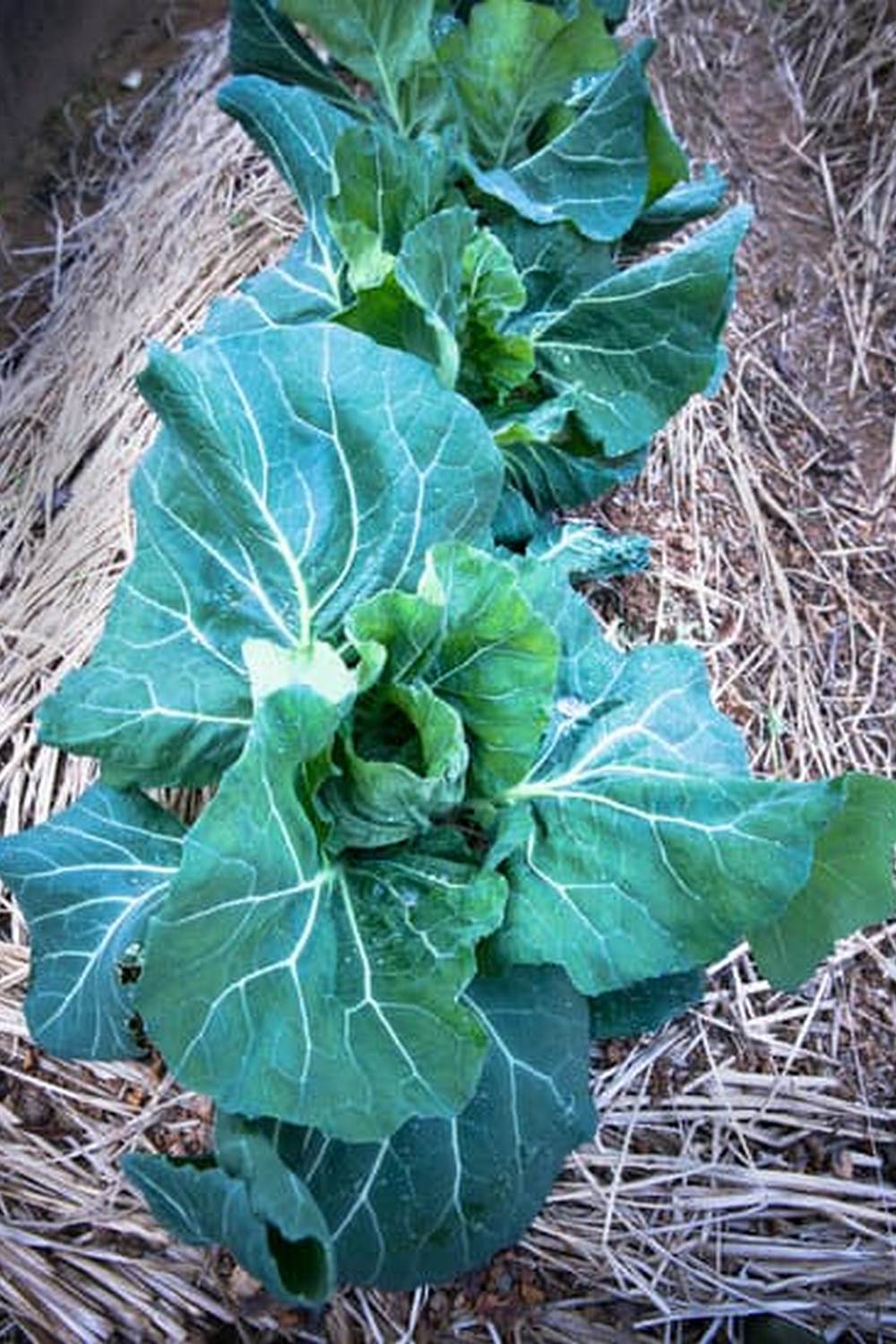Embarking on a journey of vegetable gardening in Canada can be a rewarding and fulfilling experience. This guide to Canadian vegetable gardening will provide you with essential tips and insights to help you cultivate a successful garden in the diverse climate zones of the country. From selecting the right vegetables for Canadian weather conditions to managing pests and diseases, this guide covers every aspect of growing your own produce in Canada.
The popularity of vegetable gardening in Canada can be attributed to various factors, including the desire for fresh, organic produce, the satisfaction of cultivating one’s food, and the opportunity to connect with nature. With an increasing emphasis on sustainability and self-sufficiency, more Canadians are turning to vegetable gardening as a way to reduce their environmental impact and live a healthier lifestyle.
As you delve into the world of Canadian vegetable gardening, you will discover the importance of choosing the right vegetables that are well-suited for different climate zones across the country. Understanding your garden site’s soil composition, sunlight exposure, and drainage is crucial for establishing a thriving garden. By following this comprehensive guide, you will learn how to navigate these factors effectively and create a productive vegetable garden that will bring you joy throughout the growing season.
Choosing the Right Vegetables for Canadian Climate Zones
When planning your Canadian vegetable garden, it is essential to choose the right vegetables that are well-suited for the specific climate zone you are in. Canada has diverse climate zones, ranging from the cool temperatures of the North to the milder climates of the South. Understanding your local climate and growing conditions will help you select vegetables that thrive in your area and ensure a successful harvest.
Consider Your Growing Season
In Canada, the length of the growing season varies depending on your location. Areas with shorter growing seasons will require vegetables that can mature quickly or tolerate cooler temperatures.
While vegetables like leafy greens, radishes, and peas can be planted early in the season and harvested before frost, other crops like tomatoes, peppers, and squash may need a longer growing period to produce a bountiful yield. Be sure to check your local frost dates and choose vegetables that align with your specific growing window.
Choose Cold-Hardy Varieties
For gardeners in colder regions of Canada, selecting cold-hardy vegetable varieties is crucial for a successful harvest. Vegetables like carrots, beets, kale, and Brussels sprouts are well-suited for colder climates and can withstand frost. These resilient plants can be planted early in the spring or late summer for a fall harvest. By choosing cold-hardy varieties tailored to your climate zone, you can extend your gardening season and enjoy fresh produce even as temperatures drop.
Adaptability to Extreme Weather Conditions
Canadian weather can be unpredictable at times, with sudden temperature fluctuations or heavy rainfall impacting plant growth. When selecting vegetables for your garden, consider their adaptability to extreme weather conditions. Look for heat-tolerant varieties that can withstand hot summers or drought-resistant plants that thrive in drier climates. By choosing resilient vegetable varieties that can handle fluctuating weather patterns, you can mitigate potential crop loss due to environmental stressors and enjoy a healthy harvest despite challenging conditions.
By carefully selecting vegetables based on your local climate zone’s characteristics and unique growing conditions, you can create a thriving Canadian vegetable garden that produces an abundance of fresh produce throughout the season. Whether you live in a cooler northern region or a milder southern climate zone, tailoring your vegetable selection to match your environment will maximize success in your garden while celebrating the diversity of Canada’s rich agricultural landscape.
Preparing Your Garden Site
When embarking on the journey of Canadian vegetable gardening, one of the crucial steps is ensuring that your garden site is properly prepared to support healthy plant growth. Here are some essential tips to consider when preparing your garden site in terms of soil, sunlight, and drainage:
- Soil: The quality of your soil plays a significant role in the success of your vegetable garden. Conduct a soil test to determine its pH level and nutrient content. Most vegetables prefer well-drained, rich soil with a pH level around 6.0 to 7.Incorporate organic matter like compost or manure to improve soil structure and fertility.
- Sunlight: Most vegetable plants thrive in full sun, receiving at least six hours of sunlight each day. Select a spot for your garden that is not shaded by buildings or trees, ensuring that your plants get adequate sunlight for photosynthesis and growth.
- Drainage: Proper drainage is essential to prevent waterlogging, which can lead to root rot and other issues. Avoid planting in low-lying areas where water tends to accumulate. If necessary, consider raised beds or adding organic material to improve drainage.
By taking these factors into consideration when preparing your garden site, you set a solid foundation for a successful Canadian vegetable garden.
In addition to soil, sunlight, and drainage considerations for your Canadian vegetable garden site preparation, it is also important to plan for proper spacing between plants and efficient use of space:
- Spacing: Different vegetables have varying spacing requirements based on their mature size and growth habits. Consult seed packets or gardening resources for recommended spacing between plants within rows and between rows.
- Vertical Gardening: To maximize limited space or create visual interest in your garden, consider vertical gardening techniques such as trellising for vining plants like tomatoes or cucumbers.
- Succession Planting: Plan ahead by staggering planting times throughout the growing season to ensure a continuous harvest of fresh produce. After harvesting early crops like radishes or lettuce, replant with fast-growing varieties for later harvests.
Taking these aspects into account will help optimize the productivity and efficiency of your Canadian vegetable garden while making the most out of the available space.
Planting Schedule
When it comes to planting your vegetable garden in Canada, timing is crucial. The climate in Canada varies greatly from region to region, so it’s important to know the best time to plant each type of vegetable to ensure a successful harvest. Generally, the planting window for vegetables in Canada ranges from late April to early June, depending on your specific location and climate zone.
In regions with shorter growing seasons, such as Northern Canada or high-altitude areas, starting your seeds indoors a few weeks before the last frost date can give your vegetables a head start. Some cold-hardy vegetables like kale, spinach, and radishes can be directly seeded outdoors as soon as the soil can be worked in the spring. On the other hand, warm-season vegetables like tomatoes, peppers, and cucumbers should be planted after all danger of frost has passed.
| Vegetable | Best Planting Time |
|---|---|
| Tomatoes | After all danger of frost has passed (late May/early June) |
| Carrots | Early spring or mid-summer for fall harvest |
| Zucchini | Once soil temperature reaches 60°F (mid-spring) |
By following this planting schedule and adapting it to your specific location, you can maximize the yield of your Canadian vegetable garden and enjoy fresh produce throughout the growing season. Remember to keep an eye on local weather conditions and adjust your planting dates accordingly for the best results. Happy gardening.
Watering and Fertilizing Tips for Canadian Vegetable Gardens
Watering and fertilizing are essential parts of maintaining a successful vegetable garden in Canada. Properly nourishing your plants will help them thrive and produce a bountiful harvest. Here are some tips to ensure your Canadian vegetable garden gets the water and nutrients it needs:
- Watering: Providing adequate water is crucial for the health of your vegetable plants, especially during hot summer months. Be sure to water deeply and consistently, allowing the water to reach the roots of the plants. Consider using a soaker hose or drip irrigation system to ensure an even distribution of water.
- Mulching: Mulch can help retain moisture in the soil, reduce weed growth, and improve soil structure. Organic mulches like straw, leaves, or grass clippings can also add nutrients to the soil as they decompose.
- Fertilizing: It’s important to feed your vegetables with the proper nutrients throughout the growing season. Consider using organic fertilizers like compost or manure to enrich the soil naturally. Be sure to follow instructions on fertilizer packaging and avoid over-fertilizing, which can harm your plants.
In addition to providing adequate water and nutrients, monitoring your plants for signs of nutrient deficiencies or excesses is key. Yellowing leaves may indicate a lack of nitrogen, while stunted growth could signal a phosphorus deficiency. Keeping an eye on your plants’ overall health will help you adjust your watering and fertilizing practices as needed.
Overall, adjusting your watering and fertilizing routine based on your specific garden conditions will help you grow healthy and productive vegetable plants in Canada’s diverse climate zones. By following these tips and remaining attentive to your plant’s needs, you can enjoy a thriving Canadian vegetable garden throughout the growing season.
Dealing With Common Pests and Diseases in Canadian Gardens
Dealing with pests and diseases is a common challenge that Canadian gardeners face when cultivating their vegetable gardens. One of the most prevalent pests in Canadian gardens is the Colorado potato beetle, known for its voracious appetite for potato plants. To manage these pests organically, hand-picking them off plants and placing them in a bucket of soapy water can be effective. Additionally, planting companion plants like marigolds can help deter beetles from infesting your crops.
Another common issue in Canadian vegetable gardens is powdery mildew, a fungal disease that affects a wide range of plants including cucumbers, squash, and pumpkins. To combat powdery mildew, avoid overhead watering to reduce humidity levels around the plants. Using fungicidal sprays approved for organic gardening can also help prevent the spread of this disease. Proper spacing between plants to encourage airflow and removing affected leaves promptly are crucial steps in managing powdery mildew.
When it comes to dealing with garden pests and diseases in Canada, prevention is key. Implementing proper crop rotation practices can help reduce the buildup of soil-borne diseases and disrupt pests’ life cycles.
Keeping the garden area clean by removing debris and weeds regularly can also minimize the risk of pest infestations. By staying vigilant and employing organic methods of pest control and disease management, Canadian gardeners can enjoy a bountiful harvest from their vegetable gardens without resorting to harsh chemicals.
| Common Pest/Disease | Management Strategies |
|---|---|
| Colorado Potato Beetle | Hand-picking, planting companion plants like marigolds |
| Powdery Mildew | Avoid overhead watering, use fungicidal sprays, practice proper plant spacing |
Harvesting and Preserving Your Canadian Vegetable Garden’s Bounty
Harvesting Techniques
When it comes to harvesting your Canadian vegetable garden, timing is crucial. Each vegetable has its own cues for when it is ready to be harvested, and it’s essential to pay attention to these signals.
For example, tomatoes should be picked when they are fully colored and slightly soft, while root vegetables like carrots can be gently pulled out of the ground when they have reached a desirable size. Harvesting in the early morning or late evening when temperatures are cooler can help preserve the freshness and flavor of your produce.
Preservation Methods
With the abundance of fresh vegetables from your garden, it’s important to have a plan for preserving them for future use. Canning, freezing, dehydrating, and pickling are popular methods for extending the shelf life of your harvest. Canning involves sealing food in sterilized jars with heat, which can preserve vegetables like tomatoes and cucumbers.
Freezing is ideal for preserving peas, beans, and corn by blanching them before storing in a freezer-safe container. Dehydrating is perfect for herbs, peppers, and fruits like tomatoes. Pickling vegetables such as cucumbers and beets adds a tangy twist to your dishes.
Enjoying Your Bounty Year-Round
Preserving your Canadian vegetable garden’s bounty not only allows you to enjoy fresh produce outside of the traditional growing season but also helps reduce food waste. By carefully planning your harvests and utilizing various preservation techniques, you can savor the flavors of summer well into the fall and winter months.
Additionally, sharing preserved goods with friends and family or using them for homemade gifts can bring joy throughout the year. Whether it’s enjoying a jar of homemade salsa in the middle of winter or gifting pickled vegetables during the holidays, your efforts in preserving your harvest will continue to bring happiness long after the gardening season ends.
Sustainable Gardening Practices
Mulching is another sustainable practice that can benefit your Canadian vegetable garden in many ways. Mulch helps retain moisture in the soil, suppresses weed growth, and regulates soil temperature. You can use a variety of materials for mulching, such as straw, leaves, grass clippings, or shredded bark. Applying a layer of mulch around your plants will not only enhance their growth but also reduce the amount of water needed for irrigation.
Crop rotation is a sustainable gardening technique that involves moving crops to different areas of your garden each season. This practice helps prevent nutrient depletion in the soil, reduces the spread of diseases and pests, and promotes overall plant health.
By rotating your vegetables according to their families or nutrient needs, you can maintain fertile soil conditions and maximize yields in your Canadian vegetable garden. Incorporating composting, mulching, and crop rotation into your gardening routine will not only benefit the environment but also lead to a more successful and bountiful harvest year after year.
Tips for Extending the Growing Season in Canadian Vegetable Gardens
Extending the growing season in Canadian vegetable gardens can be a rewarding challenge for avid gardeners. With Canada’s varying climate zones and shorter growing periods, implementing strategies to prolong the harvest can result in an abundant supply of fresh produce well into the fall months. By following these tips, you can maximize your vegetable garden’s potential and enjoy a longer growing season.
One effective way to extend the growing season in Canadian vegetable gardens is by utilizing protective structures such as cold frames, row covers, or hoop houses. These structures help create a microclimate that shields your plants from frost and harsh weather conditions, allowing them to thrive even as temperatures drop. Additionally, incorporating mulch around your plants can help regulate soil temperature and retain moisture, providing a warmer environment for root growth.
Another useful technique for extending the growing season is by planting cold-hardy vegetables that can withstand cooler temperatures. Vegetables like kale, spinach, carrots, beets, and Brussels sprouts are known for their ability to tolerate frost and continue growing even as winter approaches. By choosing the right crops for late-season planting, you can ensure a steady supply of fresh produce well beyond the traditional gardening period.
Furthermore, implementing succession planting techniques can help stagger your harvest throughout the season and extend the overall productivity of your vegetable garden. By sowing seeds or transplanting new seedlings every few weeks, you can ensure a continuous rotation of crops that will yield a bountiful harvest over an extended period. This method not only maximizes your garden space but also allows you to enjoy a variety of fresh vegetables over a longer timeframe in your Canadian garden.
Conclusion
In conclusion, Canadian vegetable gardening offers an array of rewards for those willing to put in the time and effort. From the satisfaction of growing your own food to the health benefits of consuming fresh produce, tending to a vegetable garden in Canada can be a fulfilling experience.
By following the guidelines outlined in this comprehensive guide to Canadian vegetable gardening, gardeners can navigate the unique challenges presented by different climate zones, soil conditions, and pests to ultimately enjoy a bountiful harvest.
One of the joys of Canadian vegetable gardening is being able to choose from a variety of vegetables that thrive in different regions across the country. Whether you are located in a cooler climate or a warmer one, there are suitable options for every gardener.
With proper planning and attention to planting schedules, watering, and fertilizing tips, individuals can maximize their chances of success in cultivating a productive garden. Additionally, implementing sustainable gardening practices such as composting, mulching, and crop rotation not only benefits the environment but also contributes to the long-term health of your garden.
As you embark on your journey into Canadian vegetable gardening, remember that patience and perseverance are key. Despite potential setbacks like pests or diseases, with the right knowledge and strategies at hand, these challenges can be overcome.
By embracing the process from preparation to harvest and preservation of your garden’s bounty, you’ll find that the rewards far outweigh any initial hurdles. So roll up your sleeves, dig into the dirt with enthusiasm, and let your Canadian vegetable garden flourish into a source of pride and nourishment for years to come.

If you’re looking to get into vegetable gardening, or are just looking for some tips on how to make your current garden better, then you’ve come to the right place! My name is Ethel and I have been gardening for years. In this blog, I’m going to share with you some of my best tips on how to create a successful vegetable garden.





